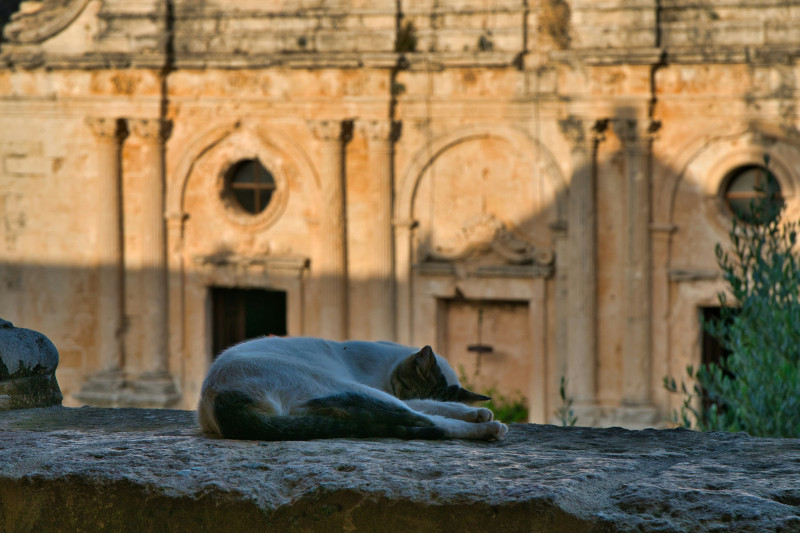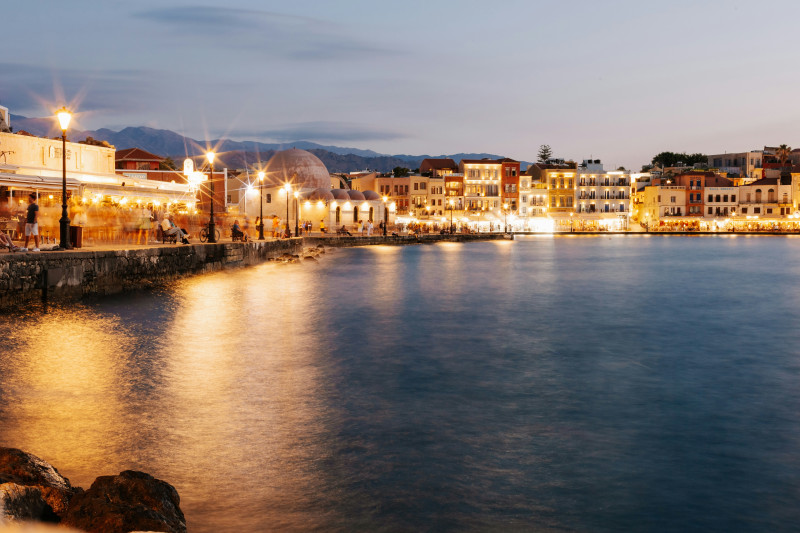A city with centuries -old history and authentic Cretan charm.
By Nicolas Bard
The city of Chania is the headquarters of the homonymous county, and today has more than 54,000 inhabitants. It is the second largest city in Crete, after Heraklion, and one of the most important ports on the island. It is a city where the osmosis of different cultures over the centuries has left its characteristic sign. The wandering of the narrow cobbled streets of the old town, with its imposing Venetian houses, blossoming courtyards, fountains and surrounding temples, is a real journey through time. Whatever corner you look at, you will find a beautiful picture.
Topanas, perhaps the most impressive area of the city, the Jewish Quarter and the Turkishity, the historic suburb of Aleppo with neoclassical villas and gardens, the old port with the picturesque beach and the imposing lighthouse, a trademark of the city, are some. From the great attractions of Chania, according to the show “Where there is Greece” A popular meeting point for both city residents and visitors is the historic municipal market, where you will find a plethora of local appetizers! If you are still interested in history and tradition, you can take a stroll through the museums of the city, such as archaeological, historical and naval museum, which unfold the island’s tumultuous history.
History
From excavations in the Kasteli area, we are known to have been inhabited since the Neolithic Age. In today’s location of the city of Chania the Minoans had built Kydonia. At the end of the Minoan era, the city was an important city -state, with its boundaries extending from the sea to the foot of the White Mountains. Kydonia was in constant disputes with other cities – states in the region, such as Aptera, Falasarna and Polyrrinia, while Homer also mentions it in the Odyssey. Ancient Kydonia maintained its own currency up to the 3rd century. A.D.
Then came the Byzantine era, for which we do not have many recordings. We know, however, that during the second Byzantine period, which lasted until 1204 AD, the city was renamed Chania, a name it maintains to this day. Then came the Venetian period that had a great impact on the history, architecture and social life of the city, and it is the time when the city evolves into a large shopping center and reinforced byzantine fortifications, which stand up to the present day. However, its walls failed to prevent the Ottomans from occupying the city in 1645, after a two -month siege.
After the Revolution of 1821, Crete was attributed by the Ottomans to the Egyptians of Mohammed Ali, who maintained it until 1840. In the era of the Egyptian rule, the impressive lighthouse in the Venetian port of Chania, which is a registered trademark of the city, falls. With the victorious outcome of the Balkan wars came the coveted union of Crete with Greece on December 1, 1913, when the Greek flag was raised in the Firkas Fortress in the Old Port, in the presence of Eleftherios Venizelos and King. From the 1970s onwards, the city of Chania, like the whole of Crete, has become a pole of tourists from around the world, which contributed to the development of the economy and the cultural boom of the place.
The old town
Although bombed and burned several times in its centuries -old history, the old town of Chania is considered one of the most beautiful in the Mediterranean. You can wander around the picturesque alleys, where you will identify samples of all the cultures that have passed there. At its center is the hill of Kasteli, which is inhabited in the Neolithic period and is a fortified location next to the old port. In it are the Palace of the High Commissioner of Crete during the Cretan State, as well as archaeological sites from the Minoan period.
A little further east of Kasteli is Splantzia, the old Muslim district, which is very atmospheric. There are many historical monuments and taverns in its picturesque alleys. There is also the church of Agios Nikolaos, which during the Venetian occupation was the church of St. Nicholas of the Dominicans and during the Turkish occupation it was the central mosque of Chania, while it operates as an Orthodox church since 1918. Walking on the coastal route you will see the Venetian NEI ( of 1497) and the carnivores, once built by war galleys. They still work today but they only repair boats and boats. There you will also see the Grand Arsenal, which hosted the Chania Town Hall, until its bombing by the Germans in 1941, and today houses the Mediterranean Architecture Center.
West of Kasteli is the Jewish Quarter and Topanas, the Christian noble district of the city, which is undoubtedly the most beautiful neighborhood of Chania. There is the Venetian fortress of Firka, and the Naval Museum of Crete. The ride ends in the Old Town cinema and highly atmospheric port, which is the most popular and tourist part of Chania. In the wider area you will see historic buildings, the Venetian Loggia, the glass mosque (the mosque in Gialos) and the magnificent lighthouse, which has been identified with the city.
Municipal Market and Courts
Among the new stores and Kum-Kapi is the Municipal Market of Chania. The first decision to establish a municipal market was made on December 22, 1903, at the municipality of Nikolaos Skamnakis. It is a cross -building that was built in 1913 on the standards of the Marseille Market, and has since housed various traditional shops and taverns. Since December 2022, it is under renovation and without unexpected to be delivered to the public in May 2025. From there begins the Democracy Street, which passes through the Municipal Garden (in which the historic café “Garden” is operating since 1870 , having housed the House of Cretan State, as well as part of the Chania Municipal Library) and the Stadium, a little further down The “Despotiko”, the mansion of the Metropolitan of Chania and ends at the Court Square. The beautiful building, which would function as a 19th -century military hospital, today hosts the courts and services of the Prefecture of Chania.
What distinguishes the city of Chania from other cities is that it maintains all its historical characteristics unchanged, from the Venetian occupation to the present day. These elements compose a multicultural mosaic, unparalleled charm and great historical value, which we do not meet elsewhere. Still, the modern city blends in with its old side, and offers visitors to the area all the necessary amenities for an unforgettable stay, and whatever season you choose to visit it, you will see a vibrant city, with pulse and temperament. The hospitality and the warm smile of the locals, along with the tsikoudies and the inimitable Cretan cuisine, will make you literally fall in love with the city, and promise to return there again.
Source: Skai
I have worked as a journalist for over 10 years, and my work has been featured on many different news websites. I am also an author, and my work has been published in several books. I specialize in opinion writing, and I often write about current events and controversial topics. I am a very well-rounded writer, and I have a lot of experience in different areas of journalism. I am a very hard worker, and I am always willing to put in the extra effort to get the job done.












